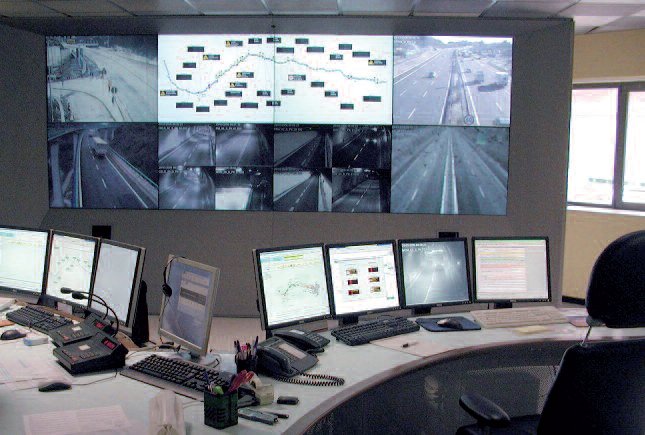Guest Post: The RMT – Data-driven Intelligent Transportation Idea from Italy

Image: Command Center of the RMT (via technositaf.it)
Although the utopians have talked about intelligent transportation since the 1950s, in the real-world terms it’s still a very new concept. The EU began work on the intelligent transportation systems (ITS) framework in the early part of last decade, the U.S. Department of Transport hosted its first Connected Vehicle workshop earlier this year; and truly coordinated and integrated transportation systems exist only as computer simulations or localized pilot schemes. But the potential for the ITS is tremendous and it was fully recognized at this year’s Smart Mobility World exhibition held from 25th – 27th September in Turin, Italy.
The highlight of the exhibition was the Road Management Tool Project (RMT) – a collaboration between the Turin city council and Tecnositaf S.p.A. It’s a 16,000-mile long network of integrated road communications featuring an independent uniform data network. The network is able to capture and transmit precise geo-referenced data (video surveillance, audio and real-time measurements) across a single network and store it all in a single database.The data will be accessible to both the authorities and drivers enabling them to make better decisions and avoid congestion.
There have been attempts to build similar systems in Europe but they have always failed because they involved several departments arguing with each other and trying to make various alien data formats compatible with each other. The RMT boasts a modular design. New functionality can be added-on, and the network can be expanded as far as necessary.
Connected Vehicles joining the Network
Once the RMT system has been tested locally, it’s expected the same concept would spread around the whole country. It is likely that other countries will look to implement a similar system.
The beauty of RMT is that its basis is so simple – the architecture is built around the IP protocol – standard that is used on a wide variety of connected devices. It’s much cheaper to use because you’ll be able to log on using your existing PC or mobile device. Since the RMT is compatible with other technologies, it will make sense for the car manufacturers to comply with the network and build cars that can communicate with the RMT directly.
The organizers of Smart Mobility World have estimated that the global market value for the Connected Vehicle is currently around $17.5 billion but is expected to explode to $52.5 billion by 2018.
It may be a conservative estimate because currently the concept of Connected Vehicle is rather vague. It includes stuff that is not really connected – night vision system, lane departure warning and automatic parking system. Once you equip a car with WiFi or mobile broadband and plug these safety systems into the city’s “cloud,” you get something that is truly connected. Something that can communicate with other members of traffic and make clever decisions to cut emissions and improve safety!
Note: The overview of this year’s Smart Mobility World exhibition was prepared by Arvid Linde from Creditplus.co.uk car blog. Arvid is a transport engineer and author of several motoring books. Photo via tecnositaf.it.
